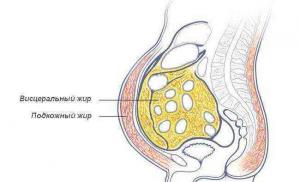What are the dimensions of the largest earthworm and where do the largest giant individuals live. Largest earthworm (Australia)
When a fisherman is digging for worms for the upcoming fishing, he, of course, wants to find someone more. But what would he say if he found a worm 3 meters long underground? Meanwhile, such worms are found in Australia. True, no one puts them on the hook - their number is already too small, so they are under state protection.
Australian giant earthworm (lat. Megascolides australis) is the largest known underground invertebrate in the world. He lives exclusively in Gippsland, a rural area of Victoria with an area of only 1000 square meters. km. And even then, you can not meet him here on every corner - like a real earthworm, he chooses clay and moist soil for life not far from water bodies.

Whether it was before - when the entire south of modern Gippsland was covered with dense eucalyptus forests, the giant worms had a place to settle. However, the trees were cut down to make room for Agriculture, and the soil itself was constantly disturbed: they plowed, planted seeds, fertilized and plowed again. This place has become uncomfortable for earthworm of such size, so he had to settle on the remaining small and isolated remnants of the forest.

An adult specimen of the giant Australian worm reaches a length of 2.5-3 meters with a body thickness of 2-3 cm and a weight of about 700 g. It is not surprising that from afar it can be confused with a long emaciated snake. However, upon closer examination, segments characteristic of all earthworms are clearly visible, of which Australian giant not less than three hundred.

Giant earthworms they rarely crawl to the surface - they spend their whole lives in long underground tunnels, which they dig out on their own. Usually the worm digs the ground with the front of its body, however, if the soil is too hard, it passes it through the intestines and throws it to the surface in heaps. One individual is able to process 500-700 g of soil per day.

It's funny that when driving underground giant worm behaves very noisily - smacks his lips, gurgles or buzzes. And all because the walls of its tunnels are covered with a special secret that makes sliding easier. Australian earthworms breed in spring and summer. They are hermaphrodites, but they need a pair for successful fertilization. After mating, each of the partners lays eggs in a pre-built cocoon.

The eggs of the giant earthworm ripen and develop throughout the year. The hatched cubs are no different from their parents except in size. The length of their body, according to our standards, is no longer small - 20 cm, but only after 5 years they grow to their final size and begin to reproduce. The Australian giant worm has a maximum lifespan of 10 years.
The people of Australia have a lot of reverence for their unusual neighbors. They even established an annual international festival"Karmai" (the name of the worm in the dialect of local aborigines). In addition, in 1985, a one-hundred-meter-long attraction-museum dedicated to the giant earthworm was built.

Megascolides australis(lat.) - a species of small-bristled worms of the Megascolecidae family, common in Australia. Discovered in 1878 by Frederick McCoy in Gippsland, Victoria. The worm reaches a length of 80 cm to 3 m.

The species is endemic to the area around the Bass River in the south of Gippsland. The area of the range is 40,000 hectares, forming a triangle between settlements Loch, Korumburra and Warragul. Worms very rarely appear on the surface of the earth. They live in moist soil at a distance of 40 meters from the river bank. In some places, they are very common, up to 10 individuals per 1 cubic meter of soil.
Worms(gypsleads) feed on roots and plant detritus. In case of danger, they hide in holes that go 1-1.5 meters deep. Residential tunnels are often kept damp. The presence of worms can be identified by the characteristic noise that occurs when the worms return to their homes. Megascolides australis is a long-lived worm with relatively slow metagenesis. Studies have shown that worms become sexually mature in their fifth year. For this reason, worms are not always able to quickly adapt to changes in the environment.

Worms are hermaphrodites, but they need a mate to reproduce. The worm lays an amber cocoon with an egg 5 to 9 cm long in chambers adjacent to the tunnel, at a depth of about 22 cm from the surface of the earth. From each cocoon, after about 12 months, only one worm is born.

Gipslands are quite fragile - careless handling can kill them. Only moist soil of a certain type is suitable for them. If you walk on the ground over their burrows filled with water, they will react to vibration from your steps - they will begin to crawl and make squelching sounds that are quite easy to hear. So even if you consider that giant gypslends are quite rare, you will know that they are near you.

Giant gypslends lay huge cocoon eggs that look like brown bean pods. The worm lays only one egg at a time, and it takes a whole year to hatch a cub. Cubs of giant gypsies grow up to 18 cm in length and take about five years to grow to their maximum length. It is not known exactly how long they live, however, according to preliminary estimates, they will be 20 years old.

Despite their imposing size, there are few giant gypsls in Australia due to the fact that their homes are easy to destroy and they reproduce slowly. The worms are listed in the Red Book as a vulnerable endangered species.

Australian giant earthworms are protected by the state. An annual festival was even organized in their honor - "Karmai" (as the natives call the worm).

But that's not all the honors. An attraction museum was built in his honor in 1985. It is a huge 100-meter building in the form of an earthworm.

Make your pet the star of the site. Take part in the competition. We are waiting for pictures of your animals. More details can be found
Reprinting of articles and photos is allowed only with a hyperlink to the site:80 cm long, 2.5 cm thick, no legs, crawling on the ground - what is it? Not guessing, it's not a snake - it's a worm. Found in the town of Gippsland in southeastern Australia, the giant gypslends are the largest earthworms in the world. If such a worm stretches out to its full length, it can reach two meters.
These creeping giants are surprisingly gentle creatures. It is rather difficult to find them, since they spend most of their lives deep underground, and the higher the water content in the soil, the easier it is for them to breathe. Their burrows are quite deep - often these worms live at a depth of 7.5-13 cm underground, sometimes heavy rains make them climb to the surface. Also, their burrows can be found in places where a landslide has recently come down.

Gipslands are quite fragile - careless handling can kill them. Only moist soil of a certain type is suitable for them. If you walk on the ground over their burrows filled with water, they will react to vibration from your steps - they will begin to crawl and make squelching sounds that are quite easy to hear. So even if you consider that giant gypslends are quite rare, you will know that they are near you.
Giant gypslends lay huge cocoon eggs that look like brown bean pods. The worm lays only one egg at a time, and it takes a whole year to hatch a cub. Cubs of giant gypsies grow up to 18 cm in length and take about five years to grow to their maximum length. It is not known exactly how long they live, however, according to preliminary estimates, they will be 20 years old.

Despite their imposing size, there are few giant gypsls in Australia due to the fact that their homes are easy to destroy and they reproduce slowly. The worms are listed in the Red Book as a vulnerable endangered species.
However, the harm to health can be colossal, because they surround themselves with cysts, which sometimes reach 20 cm in diameter and weigh up to 1 kg.
To the most long worms some species from the order of tapeworms and tapeworms belong. Among the nematodes, there are also giants, for example, the pig roundworm (the length of the female's body can reach 49 cm).
- Pork tapeworm (5 m).
- Bovine tapeworm(12 m).
- The tapeworm is wide (15 m).
Wide ribbon

Bovine tapeworm

The body of the tapeworm consists of a scolex and numerous segments. As the worm develops, the latter mature (proglottids) and disappear, leaving with feces in external environment... The number of segments of an adult can reach 1000 units. Average length each proglottid - from 16 to 30 mm, from which it can be concluded that when favorable conditions This specimen's habitat can reach a length of 23 meters. However, in practice, such individuals have not been found, therefore, in the ranking of record holders, the bull tapeworm is in second place.
Pork tapeworm
Infection occurs when eating corned beef and insufficiently fried or cooked pork. The main symptoms are characterized by pain in the epigastrium and the lower parts of the intestine, signs of acute food poisoning are often added, but all these manifestations are characteristic of the later stages of the disease. On initial stage the development of the disease can proceed for a very long time without any symptoms.


Roundworm
- (Ascaris lumbricoides).
- Pork Ascaris (Ascaris suum, causes the disease Larva migrans).
- Canine roundworm (toxocara).

The greatest danger to human health is represented by advanced forms of ascariasis. When there are too many worms, they begin to get tangled with each other, forming tight tangles that can no longer come out with drug treatment, clog the intestines, causing its obstruction. To extract them, surgical intervention is required.
Unconfirmed facts
In funds mass media there are references to cases when a person was found tapeworms, reaching lengths of 25 and even 33 meters. But these data have not been officially confirmed in any way, so their reliability can be doubted.
The first reaction, to the question: "What is the longest animal?", I would like to answer - a giraffe. After a little thought, you remember the whale. Someone might argue that there is a blue jellyfish, which is even larger. These are all delusions. Without a doubt, the worms will be the record holders.
Before late XVIII a fairly large type of animal kingdom was classified under this name. Later, zoologists disbanded it and created a number of new types.
Classification of worms
Today, the Animal Kingdom includes a large group, under common name- Protostomes that do not form a separate rank. What is commonly called worms are united by 8 types. Among them - Volosatics, Priapulids, Sipunculids, as well as Gnotostomulids with Scrapes, are of little interest to us. But the remaining 3 are worth paying attention to:
Everyone knows earthworms. These gardeners do not get tired of plowing the land, constantly aerating it. Few people were concerned with the question - what are the largest earthworms. There is perhaps no area in the world where these ringed animals are not found. Under favorable conditions, they live up to 10 years. Only by the sixth year is this individual able to lay eggs. The larvae appear in another year. All this time they grow. On the Australian continent, there are 3-meter giants. Photos of the world's largest earthworms are simply amazing. At first glance, they can be confused with a snake.

Medicine knows the fact that 17-meter long worms were removed from the human body. And this is not the biggest

The photo of such a giant is amazing. The broad tapeworm can live up to 20 years, constantly increasing in size. The carrier is deprived of the opportunity to live normally, his body is depleted to the limit. Infection most often occurs through poorly processed fish.
Bovine tapeworm

A very unpleasant animal lives in the tropics - the Dragon. The worm gets to a person through water, gnaws through the intestinal wall and settles in various organs. After reaching puberty, females move to the subcutaneous tissue.

As soon as a person is near the water, leaning out, the worm throws out numerous larvae. With age, such animals grow up to 80 cm. On the human body, numerous, easily opening pustules are formed, which cause unpleasant itching and serve as a place for the penetration of a secondary infection.
Human roundworm
Ascaris is also used as a carrier. These animals do not differ in giant size, maximum size no more than 40 cm. But their fertility is striking. The female is capable of laying up to 240 thousand eggs daily. Eggs that come out are very difficult to kill. They are capable of waiting for their owner up to 12 years. Under the right conditions, they do not need an intermediate carrier. The larvae develop well on their own, without leaving the egg. They get to a person through poorly washed vegetables and fruits, as well as contaminated water. Coming out of the eggs, for a start, begin to migrate through the intestines of a person.

Larvae can be found in the heart, liver, lungs, and even the brain. They are caused by a wide variety of diseases. After a certain stage of development, they return to the stomach through saliva, where they grow to adult animals. The circle is closed.













